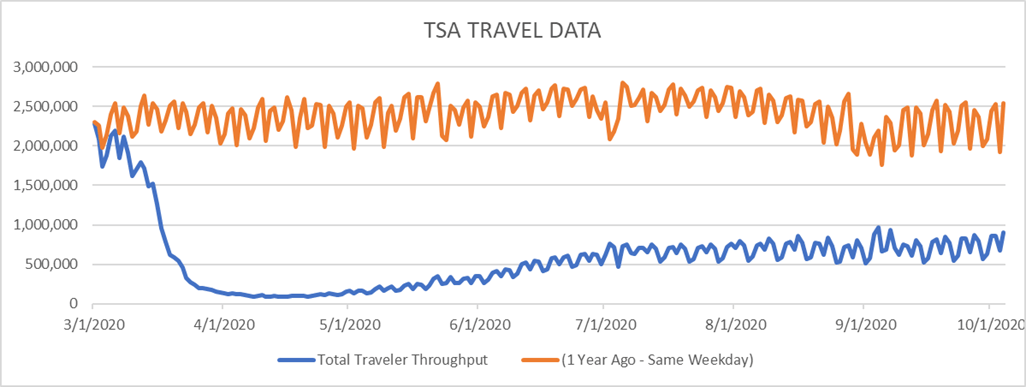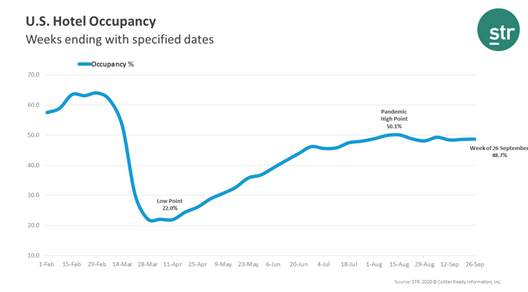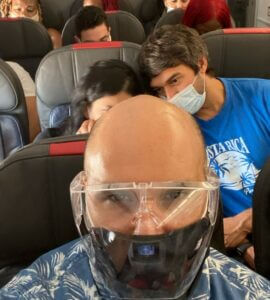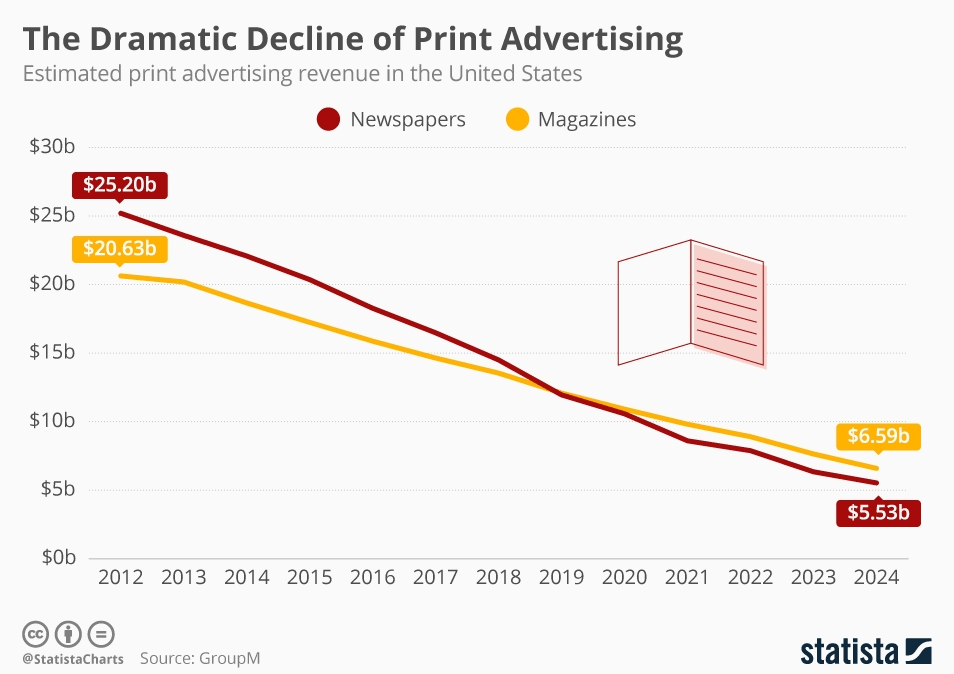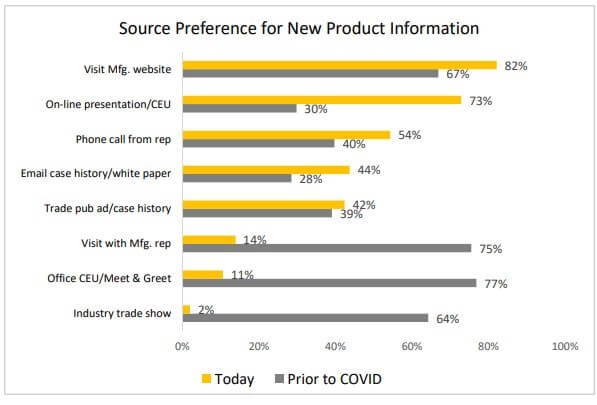Sales and Marketing Insights
Trying to understand how companies reacted to and are reacting to COVID-19 and the subsequent government reactions to it requires observations of people’s behaviors. The observations in this series were not only gleaned from interviews with the companies who were reacting; the series also tuned in on many webinars from markets to find out how companies and people were behaving.
This brought about the observation that one of the main words associated with behaviors to COVID-19 that came up repeatedly “resilience.” Some had it; others didn’t have it. Some who said they had it didn’t, and so on. The implication in what was heard was that having resilience helped in dealing with COVID-19 and government’s interventions. But did it?
When entering “covid-19 and resilience” in Google, you get 135,000,000 results in less than a second. The results include highly respected organizations’ papers on the topic, including: Deloitte, Harvard, American Psychological Association as well as the CDC. In short, there’s no shortage of expert opinions about the topic.
The Harvard reference says this: “The worldwide outbreak of the coronavirus disease (COVID-19) is a source of unexpected stress and adversity for many people. Resilience can help us get through and overcome hardship.” It leads to a 4-pager, “How to Help Families and Staff Build Resilience During the COVID-19 Outbreak,” where Harvard advises to think of resilience as a seesaw or balance scale, where negative experiences tip the scale toward bad outcomes and positive experiences tip it toward good outcomes.”[1]
The Deloitte paper points out: “As resilient leaders, one of our most critical roles right now is to sustain: to sustain our people, many of whom are experiencing not only fatigue, but more stresses than they ever have; to sustain our organizations in continuing to create value for all stakeholders; and to sustain society as it experiences multiple existential threats.”[2] The use of the word “sustain” actually confuses the definition of resilience as you will see.
Galluping Toward Resilience
What is resilience, really? Is it the right word that we need to understand in order to behave with respect to COVID-19? How does resilience factor into dealing with COVID-19, against which we can’t seem to marshal our forces enough to get an economy going again, much less our own safety? Indeed, what does resilience have to do with safety, if anything at all?
One of the webinars on the topic of resilience was presented by Gallup, the global analytics and advice firm that helps leaders and organizations solve pressing problems. The most pressing problem today, of course, is COVID-19 and what it is doing to companies. Since Gallup operates 30 regional City Centers and collects data in over 160 countries to achieve their stated mission – to create extraordinary impact through analytics and advice – it stood to reason they would be a good source for some ideas on what people were doing, should be doing, could be doing against COVID-19 and its impact.
Gallup, in fact, boasts on their website: “We know more about the will of employees, customers, students and citizens than anyone in the world. We know what matters most to them at work and in life and how those priorities change over time.”
A powerful statement from a powerful company, to “know more.”
Their presentation should, therefore, show us “the more” with its title, Building Resilience: How Managers Lead Post-Crisis Performance.[3] In that presentation, Gallup’s Dean Jones asked and tried to answer what enables an organization to be resilient after a crisis. Sharing these outcomes should help attendees understand what to do to be resilient. He also discussed if there was anything that predicts post-crisis performance in organizations and where organizations should invest to build resiliency.
Unfortunately, it turned into a sales pitch. While there’s nothing wrong with pitching your services, to do that you should demonstrate in the presentation some of the insights and solutions that are available through the services.
That didn’t happen. The presentation threw doubt into the “know more” claim than perhaps intended, as will be explored in this article. In fact, resilience may not be what’s actually required to combat COVID-19 because actually, we’re fighting on two fronts: the virus itself and the government reactions to the virus. We believe adaptability, not resilience, is the word we are all looking for.
The first problem, however, was to overcome defining the word (Aristotle always said to do that before you do anything else).
What is Resilience?
Resilience is one of those words that has been used a lot recently even before the virus hit. As a result, it has been abused and drifted from its meaning. It’s thrown out there freely, and frankly, no one takes the time to really understand what it really means, giving way to analogies like seesaws in the Harvard paper.[4]
The dictionary says resilience is “the capacity to recover quickly from difficulties; toughness” or “the ability of a substance or object to spring back into shape; elasticity.”
Definitions are interesting because they have to use other words to shape the definition of the word being defined. In this case, words like “capacity” or “difficulties” or “elasticity” are used to define resilience. As usual, definitions often confuse the issue further.
For example, if resilience is recovering quickly from difficulties, we would all have to conclude that resilience was something we all lacked when it came to COVID-19’s impact on us and our economy. Resilience is really a characteristic, something that helps us build a picture of a person, place or thing. The thing about characteristics is you usually need more than one to help you paint the complete picture of the person, place or thing.
People, places and things are never one dimensional; they are complex.
So resilience as a single characteristic can apply to a person, as well as a company. A rock isn’t resilient. If you smash it with a sledge hammer, it breaks into pieces. Your head isn’t resilient either. If you hit it with the rock it may not snap back into shape. Bread dough is resilient. You can pound it and it will go back to its original shape. A rubber band is resilient, unless you pull the ends too hard and you break it.
Recovering quickly from something is the characteristic we’re looking for when we talk about resilience. Elastic. Is it apparent to anyone that there is no resilience going on with COVID-19?
We are fighting on two fronts. The statistics tell us clearly that the virus kills some people, but it doesn’t kill others. In fact, the ones it does not kill can be said to have resilience — some more than others, since they return to their normal health after the virus experience.
But on the other front, regarding government rules and regulations, many businesses do not exhibit that characteristic. The rules and regulations are breaking many businesses. Even when lockdown rules are relaxed, these businesses do not snap back to their original shapes.
Elasticity is no where to be seen.
One would have to say, therefore, that the majority of companies and people are not really resilient — not because of the virus itself, but because of the rules imposed on businesses by governments. The governments’ reactions to the virus have crippled and shattered companies and people, markets and ways of life.
But, reactions to events or a crisis like COVID-19 have proven to all of us that resilience – or some other word – is something we should really consider carefully to have in our arsenal if we are running a company. In fact, resilience is a characteristic we should have in our personal life because life is difficult. Overcoming difficulties because you have resilience helps survival.
Sometimes.
The start-stop-start again regulations of governments nullify how resilience works or should work. Being “elastic” and springing back to what you were doing and then being shutdown again or partially open, doesn’t do a business any good in terms of survival. No amount of resilience is going to allow that.
Adapt, Change or Disappear
I believe the word we’re looking for is adaptability. Like a virus mutates itself to survive, businesses have to mutate and adapt in order to change into something other than what they were in order to survive. Or die. This article supports that thesis.
As the research conducted proved in our series Navigating COVID-19 in Sales and Marketing, most companies survived because they adapted, not because they were resilient. Those with resilience kept moving forward only to be thrown backward again and again. Those that adapted changed their behaviors enough to survive whatever rules and regulations were thrown at them – and the effects of COVID-19 itself.
In other words, they mutated.
For example, some just shutdown, collapsed from the weight of regulations banning customers (the lifeblood of businesses). Others adapted by furloughing employees for awhile (and actually re-defined the word “furlough”) or took the PPP or did something else (i.e., declaring themselves an “essential” business somehow by reading carefully what the word “essential” means and then revamping their own purpose and mission). Sometimes, no amount of adaptability or resilience would have saved the business (i.e., a riot destroys the building where the business operated, or a state mandate eliminated customers and then crushed a business for daring to ignore the mandate, eventually killing the business).
Corporations everywhere large and small are even now redefining themselves or trying to refine themselves. As one associate said to me recently about the COVID-19 situation, “It’s just accelerating what was going to happen anyway.”
Which is only partially true.
The acceleration came from the government reactions to COVID-19, not the virus itself. Words like “pandemic” or “death” brought about an intense fear, resulting in “lockdowns.” If you are tied up and you do not possess Houdini-like talent, no amount of resilience or adaptability or anything else is going to help you survive.[5]
Therein lies one of the dirty secrets about resilience: resilience needs a difficulty in front of it to show itself. The difficulty itself will help define if resilience – or some other characteristic – is being displayed. Without difficulty, without something that tries to “break” the person, place or thing, resilience can not exist –nor can adaptability. Resilience will allow the person, place or thing to bounce back once the difficulty appears. Adaptability will allow the person, place or thing to change in order to survive the difficulty.
But, which word do we need to cope with this COVID-19 environment?
What Gallup had to say about resilience
Most of the time, when such discussion happens, people respond by saying, “We’re just arguing about words.” But, words are important – very important. So are actions. Some say actions speak louder than words. But, we have to use words to describe actions, don’t we?
One of Gallup’s findings was: “In the U.S., general life ratings plummet, matching historic lows.” In other words, they weren’t seeing a lot of resilience. But then, who would think life ratings would rise during a difficulty like COVID-19? And, what is a “general life rating” anyway? But what do life ratings have to do with resilience if anything?
One of the good things about Gallup and other research organizations and papers on this topic is that they often confirm the obvious. Confirmation is one thing, but active suggestions to combat the obvious like “we’re not feeling too good about this virus thing” should be part of the information being provided, wouldn’t you agree?
In other words, if I know life ratings are plummeting, what should I do to reverse course as an organization who “knows more?” That was what the Gallup webinar attempted to do. So, here are some of the findings from the Gallup research that attempted to answer this question during the presentation for your study:
- Engagement is a strong predictor of performance during a crisis.
- Meaningful feedback is critical to engaging employees during COVID-19.
- Managers play a significant role in reducing worry during COVID-19. However, manager feedback has been missing, especially with remote workers.
- Managers should provide feedback.
- Focusing on what you do best boosts enthusiasm and commitment to the organization.
- Positive reinforcements work better than negative.
With respect to Gallup, these are all good, but they are obvious observations, for which extended research would not be required. Nor do they contain any suggestion of overcoming the difficulty.
For example, the fourth finding – that managers should provide feedback – is elemental whether a virus is here or not. The last finding – that positive reinforcement works better than negative – should be apparent to anyone who has ever had to discipline children or taught in a classroom. What WAS Gallup trying to say?
Gallup pointed out that most employee engagement programs haven’t worked…that the elements of engagement that increase in importance during “tough times” include: 1) knowing what is expected, 2) materials and equipment, 3) the opportunity to do your best, 4) the mission or purpose that makes you feel what you’re doing is important and 5) having coworkers committed to quality.
With respect again, duh. With even more respect, you cannot create a program of engagement. You can try, but engagement must happen naturally, with purpose of course, but a structured program where you “have to” engage simply never works.[6]
How do you structure a program that tells you when to engage someone in conversation, in action? Part of what COVID-19 has done is expose the impotence of such structures. These programs all collapsed in the face of the virus and government’s impositions.
Besides, these Gallup findings are true whether there is a crisis going on or not. Importantly, Gallup noted that 70% of any variance in the team engagement is determined solely by the manager.
But, the influence of the manager has always been the determining factor of a successful operation.
I learned early when I was a teacher that “all education is self education.” I could only facilitate students, trick them into learning[7], but the commitment to learning had to be on the student’s shoulders. Teachers don’t teach: they facilitate.
The Gallup presentation allowed questions. One of the questions I asked was regarding their finding that feedback from managers was really important.
My question, which was based on the lockdowns and everyone being separated, was: “Could ‘feedback’ be just the physical presence of the manager and employee being in the same room together?” It was based on the assumption that virtual doesn’t cut it…that being in the office even part time would be feedback. That if a manager just showed up at the office and an employee also did, their physical presence together would be “feedback.”
Someone at Gallup typed the answer, “’meaningful feedback’ cannot be just the presence.”
With respect, Gallup is wrong.
Physical presence between manager and employee is always meaningful (just ask any employee who never sees the boss). Seeing “the general” in the midst of battle does wonders for the troops’ morale. Seeing your boss lead the charge to overcome fear, walk through the office with or without a mask, is reinforcement – and sometimes more meaningful than can be measured as a data point.
That’s one of the things COVID-19 has done: shown us all how we really need physical contact with each other.
Words Have Consequences
One of the slides of the Gallup presentation was about the changing global workplace, where Gallup presented words of the past juxtaposed with words of the future. For example,. “My Paycheck” was in the past, but “My Purpose” was in the future column. The chart looked like this[8]:
What Gallup and other organizations miss, however, is that you can’t have one without the other. That is, one simply can’t ignore the past for the future because you’ll miss the present entirely. Their chart is comprised of words and words have consequences. They mean different things to different people.
For example, you might think people are looking for purpose, but without a paycheck, frankly, who cares about your purpose? Should you be paid to achieve YOUR purpose, or the company’s?
Most purposes – company or personal – need money to be achieved and you get money by working. If you can’t work, your purpose is going to change instantly to survival, not trying to understand the secrets of the universe.
The virus has qualified everything to a simple choice: is it a want or a need[9]?
Note all of their words in the chart begin with “my.” In a culture of “my” where is the “your?” Can you have one without the other?
Whistle While You Work
The most successful people in life do not work. They turn work into their life. Therefore when they work, they live their life. And when they are leading their life, they are working. They have merged the two words into one: doing.
This is actually why Aristotle was right when he said we have to define our words in order to understand each other and ourselves. Throwing words around like resilience or work or adaptability without defining them confuses things.
The same is true of Gallup’s “boss” versus “coach.” A good boss IS a coach, and a good coach is a boss. Just ask Lou Holtz. He once said that a bus can have only driver. If you don’t like the way he is driving, get off the bus. Or, to paraphrase another thing he said, “If you’re a good boss, you’ll be a good coach. If you’re a good coach, you’ll be a good boss. And to be good at either, you’ve got to have discipline.”
The Gallup presentation was interesting, but being more effective as a leader requires practice, discipline and a thorough understanding of mission– not a resilience checklist.[10]
Someone once said that there are only two reasons why people buy anything: to gain something or to protect what they already have. But, “buying” when COVID-19 hit disappeared or it changed – safety became the concern. People bought toilet paper, not cars. Or disinfectant, not a vacation (besides, look what happened to the airlines).
There is a relationship between people in business as buyers and sellers, but when rules and regulations are imposed changing that relationship, the words around the relationship also changed.
Freedom is such a word. In business, pre-COVID-19, you were free to buy what you wanted, how you wanted, how much you wanted. Post-COVID-19, that freedom was taken away. Is it any wonder that any amount of resilience failed miserably? A lockdown can’t be overcome by resilience. It can only be overcome by unlocking.
No two companies can coexist that make their living in the identical way. To survive, a company has to not only uncover and promote what are its unique advantages, it must also have the capacity to change those advantages quickl, and then communicate those changes to its markets.
Adaptability is what’s required to survive this COVID-19 environment. We are going to have to adapt, to change. If we do not, we would, could and will disappear.
_________________________________________
[1] How to Help Families and Staff Build Resilience During the COVID-19 Outbreak, Center on the Developing Child.
[2] The perseverance of resilient leadership: Sustaining impact on the road to Thrive, by Punit Renjen, Deloitte.
[3] You can view the presentation here: Building Resilience: How Managers Lead Post-Crisis Performance. You will have to register to see it, but it might be worth it just to understand what we’re talking about. It may surprise you.
[4] If you read the short paper, a statement says, “We can make it easier for a scale to tip toward positive outcomes by strengthening core life skills.” While it’s an interesting paper, it’s not really about resilience per se.
[5] Arthur Schopenhauer was a smart guy. In his Freedom of the Will (one of the essential books to read) he talked about where a person can experience true freedom. Physically, for example, we’re not really free. Try not sleeping or not eating. You might think that mentally you are totally free to think about anything you want, but that’s not true either. You can only think about what you know, not about what you don’t know. Schopenhauer led us to the moral plane where true freedom exists (good or evil choices). In other words, you have the freedom to select one over the other (of course, as you define these words). The behaviors around COVID-19 have, actually, led us to this moral plane, which is not the topic for this study. In Schopenhauer language, you are physically resilient if you can bounce back from a cold or from the virus if you catch it. You are mentally resilient if you can argue both sides of an idea. If the virus kills you or you can’t see the other side of an argument, you are not resilient. This is why adaptability is the key word – you have to adapt and change in order to survive. The businesses studied adapted – they changed HOW they worked in order to survive.
[6] Affectation means the act of displaying an attitude or mode of behavior not natural to yourself or genuinely felt. This is what happens when you “force fit” a program designed to elicit behavioral changes. Trying to do so with a structure program automatically eliminates the genuineness of what it is you are trying to do. That may seem counter to what is going on, but that is what the virus has shown us: the uselessness of, for example, performance reviews. What do you review when you can’t “see” the performance? Indeed, what IS performance in a COVID-19 environment?
[7] I had been a teacher of underachievers – a specialized program called Individualized Instructional Resource Program (IIRP) for seven years before moving on to another public school teaching career and then finally advertising. It was a great training ground, actually, for what I did as a businessman.
[8] : Building Resilience: How Managers Lead Post-Crisis Performance, Gallup, Dean Jones, Global Talent Development Architect
[9] I remember going to my first Market at HIGHPOINT with Don Tickle, one of the greatest businessmen I ever met. As we walked into one of the hundreds of showrooms in that city, we walked past furniture, fabric, statues, all manner of items. Don was pulling a stroller case behind him. He stopped suddenly, turned to me (I was trying to keep up with this man 15 years my senior at the time) and said with a gleam in his eye: “Do you see anything you need?” Instantly, and I mean instantly, a complete understanding took place in my brain: MARKET wasn’t about anything you need. It was all about the “want.” COVID-19 has exposed to all of us that essential difference and some of those differences we had lost sight of, like the need for human contact. Family. What is important in our lives.
[10] See Leadership in Today’s World, an article written by Jim Nowakowski. In fact, if you Google “leadership in today’s world” you will find it ranked close to the top on page one. It is one of the most highly read articles on the Interline website.

